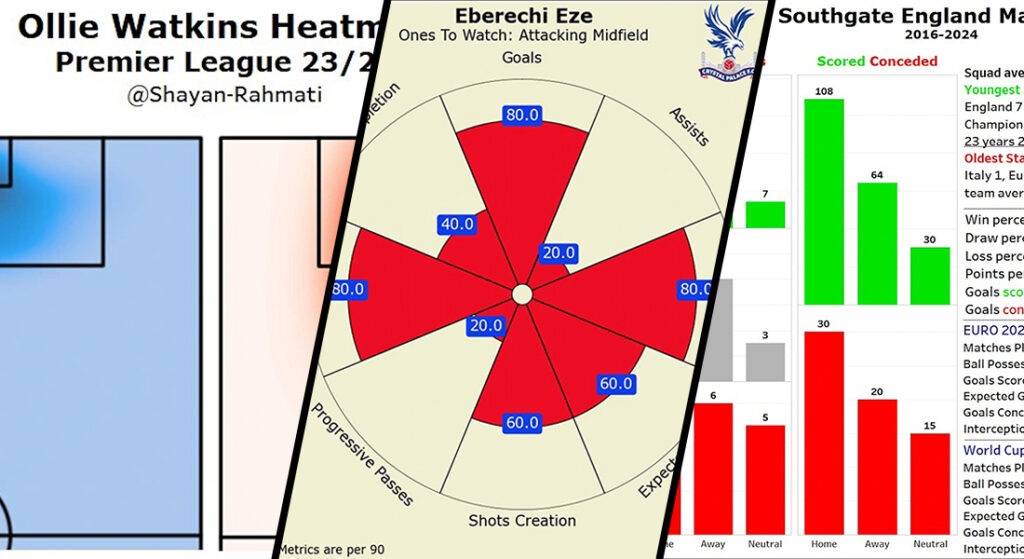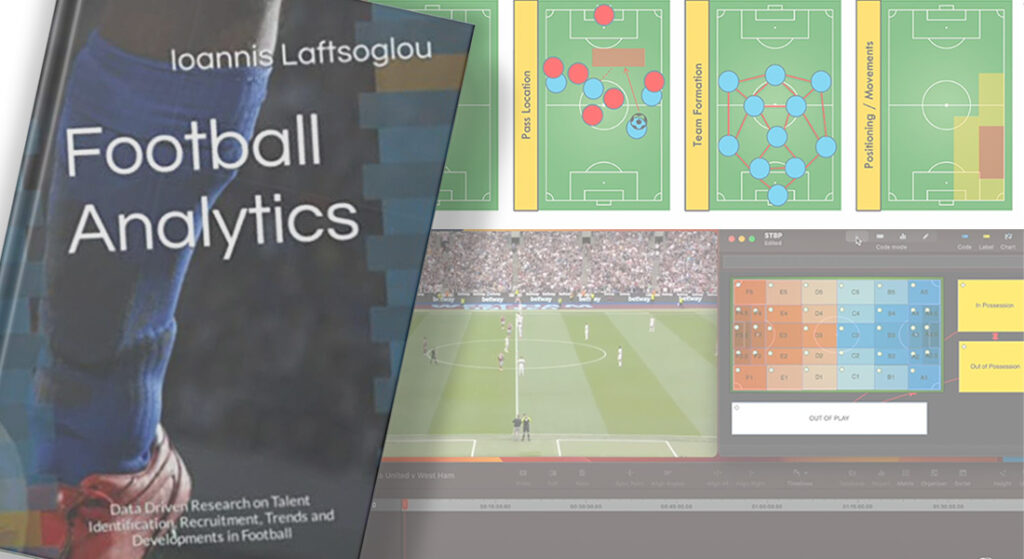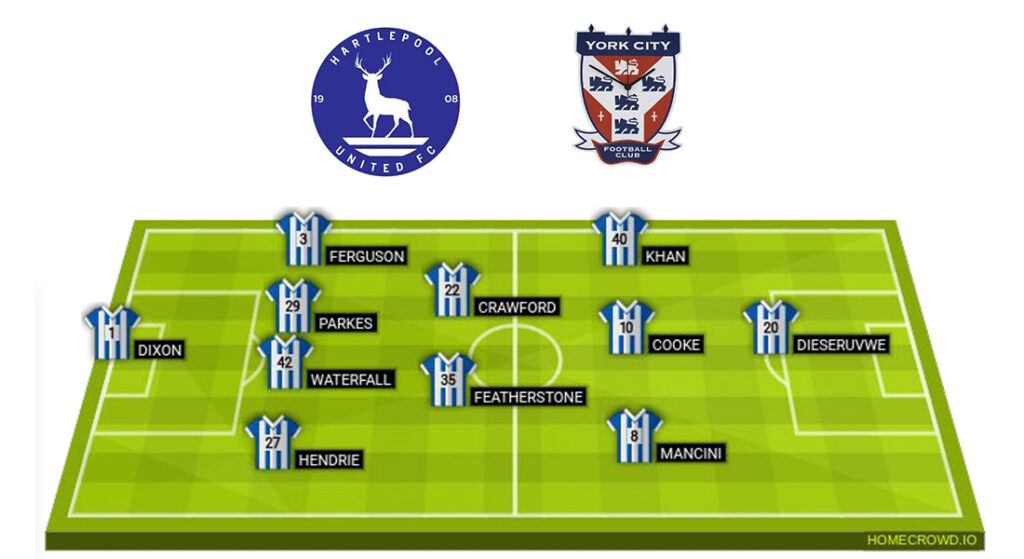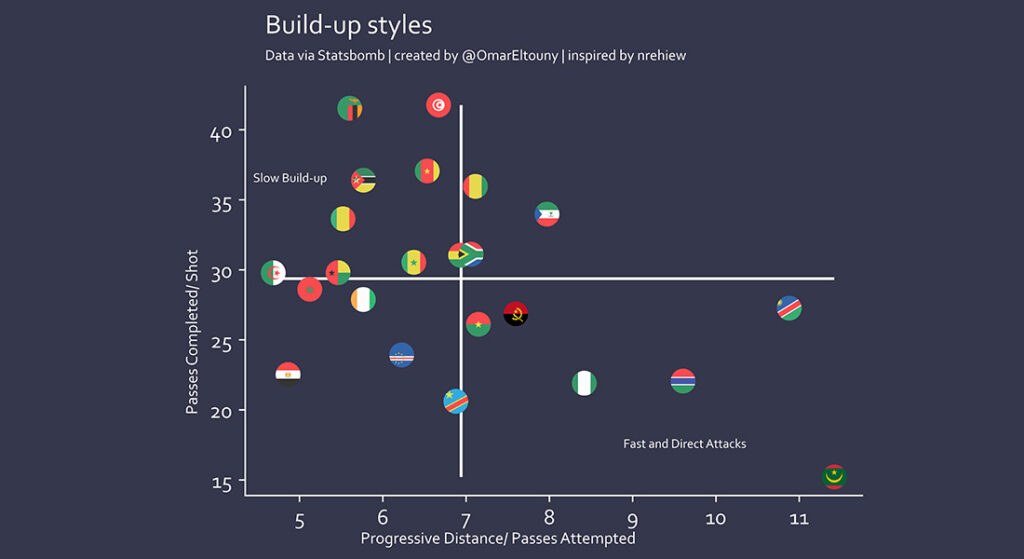A tactical and analytical exploration into Arsenal’s comfortable win against Chelsea in comparison to defeat against West Ham.
Contents
Introduction
A significant frustration for the Arsenal team and fans this season has been their ability to win what would be deemed on paper the ‘more difficult’ games but lose what could be deemed the ‘easier’ games. Arsenal asserted early dominance in the WSL by beating Chelsea 4-1 at the Emirates, and after already beating Manchester City 2-1 in the WSL, it seemed they were making their mark as serious challengers for the title. Concerns arise however, when we consider their inability to pick up points in a number of different WSL games this season, that also included draws and narrow wins. Most recently, a gutting defeat saw Arsenal lose 2-1 to West Ham in a game they needed to win to keep up in the table.
There’s no surprise then that individuals are intrigued to understand how Arsenal can beat the likes of Chelsea so comfortably yet struggle against bottom of the table West Ham. To understand why this is the case we have to explore it tactically, looking at both games analytically to understand performance, successes and failures. This report aims to help you understand how Arsenal and their opponent played in both of these games. This will allow discussion of what Arsenal may need to consider going forward to make sure they are winning near enough every single game, no matter who the opponent is.
Arsenal v West Ham
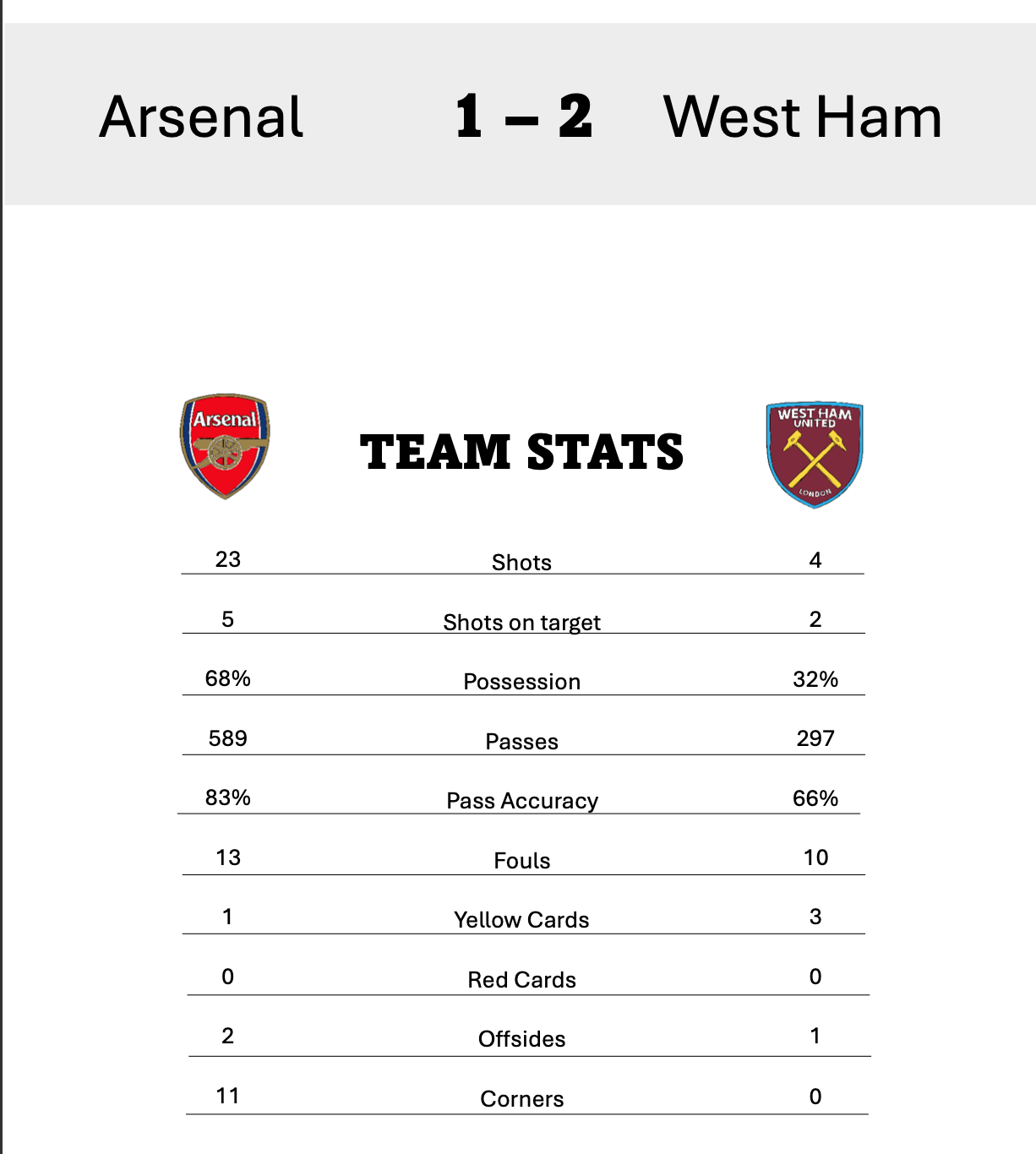
Arsenal set up in this game with the same formation they have grown to utilise this season, a 4-2-3-1. The use of this formation saw success in other games this season. Earlier in the season Arsenal opted for a 3-4-3 which saw their defeat in their first WSL game against Liverpool, followed by a draw at Manchester United. The first use of the 4-2-3-1 came in their comeback win against Aston Villa. Jonas then continued to utilise this formation in wins against Bristol City, Manchester City, Leicester City, Brighton, West Ham, Chelsea, Everton and Liverpool. They did lose twice using this formation, notably against Spurs and then the recent game against West Ham. This tells us there is some apparent success in Arsenal using the 4-2-3-1 and clearly the defeats are in some way reflective of overall performance and the opponent’s tactics and performance.
In the previous report we looked at how a 4-2-3-1 typically operates, so if you wish to refer back to that for a full detailed explanation please feel free to do so. Weaknesses of this formation appear when the opposition team plays two strikers as the two CBs are often left in 2v2 situations. If CDMs are out of position it leaves space to exploit in the middle and if attacking midfielders don’t come deep to receive the ball, the team can struggle to move the ball up the field effectively.
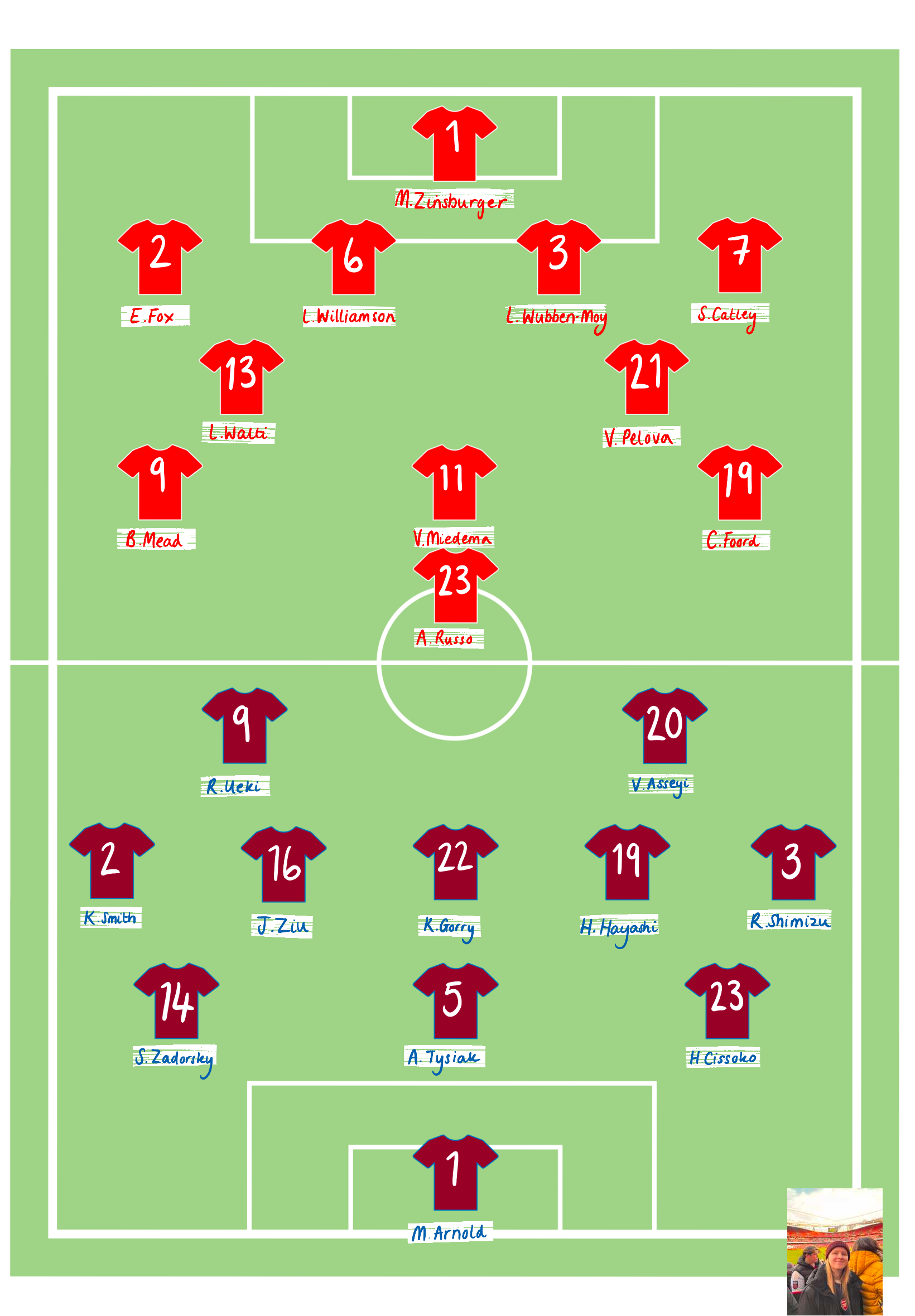
To better understand this we can look at how West Ham set up in this game. West Ham operate in a 3-5-2, with three CB’s, two wingbacks, three midfielders and two strikers up front. Immediately if we consider the weaknesses of a typical 4-2-3-1 (the formation Arsenal are playing), we notice areas West Ham might be able to exploit. With West Ham playing two strikers, they have the ability to go up against the two CB’s, especially if the Arsenal fullbacks are caught out further up the pitch.
West Ham also match Arsenal’s numbers in midfield, so they shouldn’t be outnumbered, and Arsenal may struggle to find space in that area of the pitch. If West Ham mark the CAM effectively then Arsenal may struggle to find passing routes from the defensive third to their attacking third.
All of these aspects are hypothetical and not guaranteed; to achieve success West Ham and Arsenal would need to utilise the strengths of their formation effectively for the entire game and will have to respond to any changes either team makes. They will also have to be aware of the weaknesses of their own system to prevent the opposition team succeeding in that manner.
In order to understand how each team actually performed, we can look to how Arsenal and West Ham operated in and out of possession. After considering successes and failures of both teams, we can look to possible suggestions of what both teams can take from this game going forward.
There are also a number of weaknesses associated with the system West Ham are playing (3-5-2) and Arsenal may achieve success by exploiting these weaknesses. This typically includes vulnerable flanks; if the wider midfielders push forward to support the attack then the defence can be exposed out wide for the opposition to utilise and get crosses into the box. The central midfield is designed to provide defensive stability, so creativity in the midfield and therefore in the attacking third may be limited. If the forwards are marked out of the game or don’t perform, goal scoring opportunities are hard to come by.
To credit the above information and for more details on the 3-5-2 formation, click the button below to view the resource by Footballizer.
Arsenal in possession
How Arsenal played in this game when they had the ball. This includes things that went well, areas of weakness and any goal/goals scored.
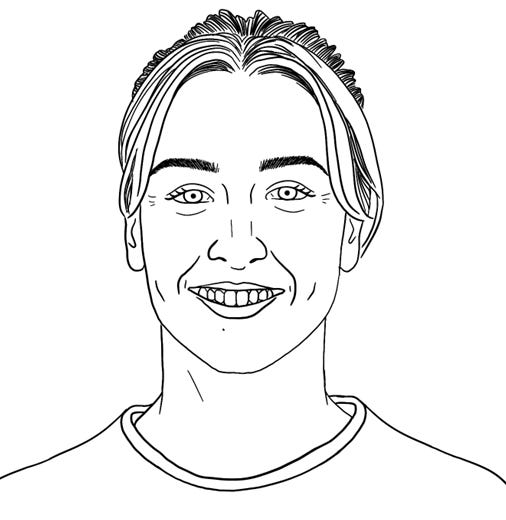

Arsenal failed to assert early dominance in this game. West Ham often set up defensively so catching West Ham out in a lack of concentration or out of position could be key to asserting early pressure and creating goal scoring opportunities. Straight from kick off only 13 seconds into the game after West Ham attempt a long ball clearance, Williamson headers clear and Walti clears the loose ball to the feet of Russo. Russo utilises her hold up play ability and could play it through to Foord who would have space in behind to capitalise on, but there’s not enough on the pass and West Ham can play it back to Arnold and build play again.
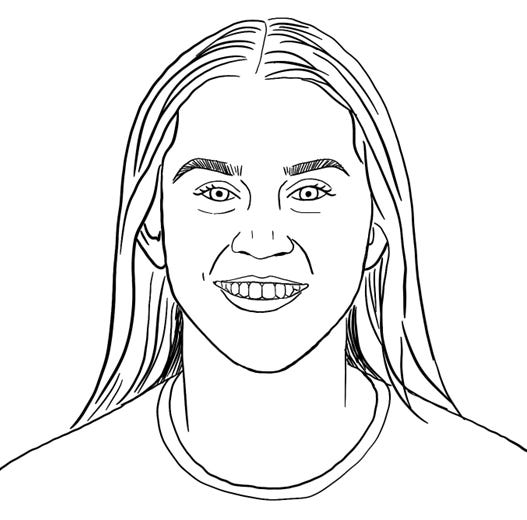
Arsenal have had a lot of success in recent games playing through the lines quickly and effectively to catch the opposition out. They struggled to do this successfully in this game, despite Wubben-Moy often attempting to play the ball through the lines to the likes of Miedema. West Ham, especially Gorry, did extremely well to close these passes down straight away. Even when Arsenal tried to play the ball in behind for those making a run, West Ham predicted and prevented this from being successful. One of the key attacking opportunities, however, came from a rare opportunity for a pass in between the lines from Wubben-Moy to Pelova. Her accurate pass resulted in Pelova laying it off to Russo who left it for Miedema, and almost resulted in Miedema getting a shot away in the box.
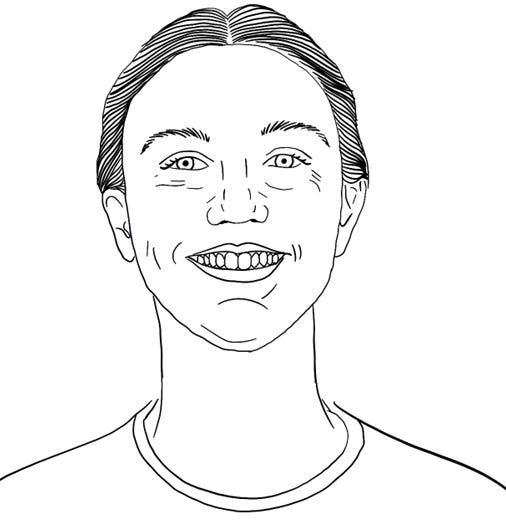
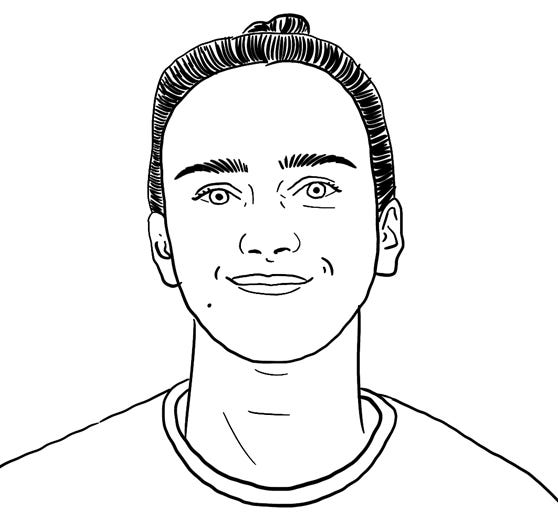
Arsenal would often try to move the ball out wide or over the top, realising they weren’t able to play through the lines. Balls were coming from the CB’s (Williamson, Wubben-Moy and Ilestedt), aiming to catch West Ham out, but they often had little success as they were forced passes to no-one or overhit.
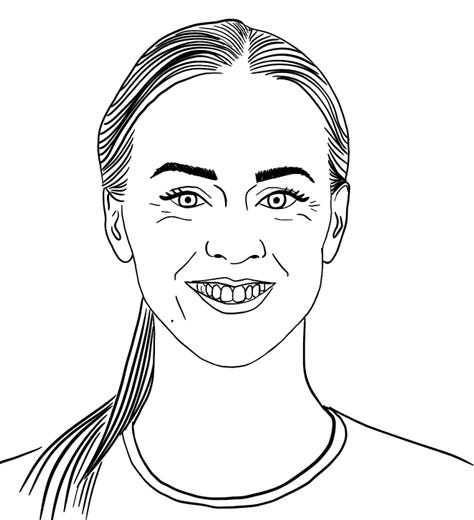
One key aspect mentioned in how to effectively operate in a 4-2-3-1 and also how to exploit weaknesses of a 3-5-2 (West Ham’s system) was the use of wide players up the flank. If performed effectively, a ball out wide could catch West Ham out. Arsenal did not utilise this often throughout the game, perhaps due to West Ham’s brilliant defensive work. Miedema often tried long ball switches to Mead on the right flank, but Mead failed to time her runs and was caught offside.
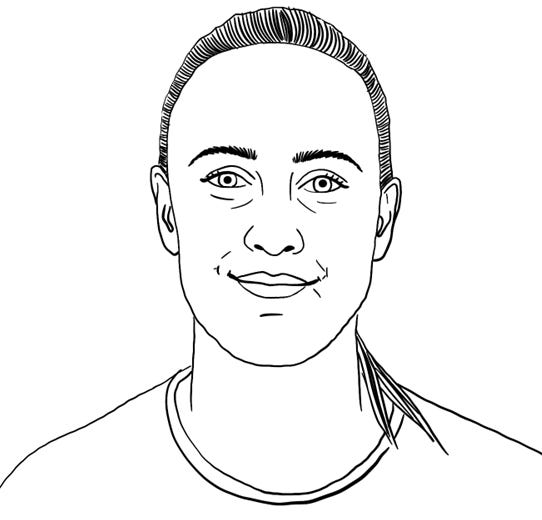
Even when Arsenal got a rare chance to get a cross in, for example through Foord, the cross was put in without looking up. This resulted in wasted opportunities and the ball going out for a West Ham goal kick.
The usual players who provide the attacking threat for Arsenal struggled to get into the game, in particular Pelova. Arsenal failed to get Pelova into the game at all, especially in the first ten minutes, when she hardly managed to get a touch on the ball. Pelova is a creative outlet for Arsenal and key to the 4-2-3-1 system working effectively, so this affected how much of an attacking threat Arsenal posed. Often when the ball fell to Pelova or when she dropped deep to receive the ball, 3 or 4 West Ham players would quickly close her down and put her under pressure to win it back immediately.
Fox was doing her best to bring energy into the attack for Arsenal throughout, driving with the ball and drawing fouls. She did well to utilise her crossing ability when the opportunity presented itself, producing a cross for a Russo header that went just over the bar. These opportunities were rarely presented to the wingbacks in Fox and Catley due to excellent man-marking by West Ham, preventing the crosses coming in.

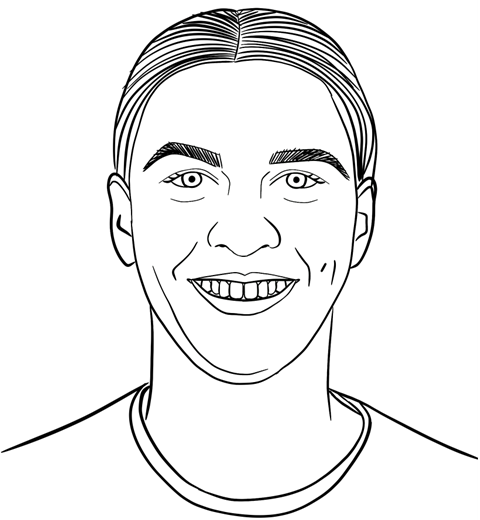
It is clear Arsenal were frustrated in possession throughout this match, often kicking the ball up high with no target man, gifting possession back to West Ham. Even though West Ham did well to make it difficult for Arsenal to get shots away through defensive numbers on the edge of the box, Arsenal had some opportunities to get shots away, yet they were hesitant and didn’t take them. Even when Arsenal had the opportunity to string passes together, they had no luck throughout this match and failed to play quick, accurate passes.
Arsenal out of possession
How Arsenal played in this game when they didn’t have the ball. This includes how they defended, things that went well, areas of weakness and the reasons for the goal/goals Arsenal conceded.
A significant amount of the discussion of Arsenal out of possession will be covered in the following section denoting how West Ham played in possession. There are several brief things to cover in this section, however, including things Arsenal did well or could have done better when they didn’t have the ball.
Fox did extremely well on the edge of the box after Arsenal set pieces to prevent West Ham from breaking and win the ball back high up.
Arnold would often look for the long ball out wide, with the hopes Gorry would win the loose ball. Miedema did well to get back and put pressure on Gorry to win possession back for Arsenal.
There were some occasions when West Ham attempted to play out from the back, with the CB’s splitting and Cissoko positioned on the right side. When Arnold played the ball to her, Russo did well to put her under pressure, forcing her to play it back to Arnold, who when put under pressure by Miedema forced a rushed clearance and won a throw in for Arsenal high up. This was a clear example of how Arsenal could press and put West Ham under pressure effectively, yet this seemed to happen on very few occasions throughout the entire match.
Arsenal became extremely frustrated towards the end of the game and gave away silly fouls. When they needed goals, giving the ball back to West Ham in this manner was extremely counter-productive.
West Ham in possession
How West Ham played in this game when they had the ball. This includes things that went well, areas of weakness and any goal/goals scored.
West Ham looked to congest the midfield area where Arsenal were looking to move the ball. It was clear they wanted to move the ball out wide, with overlapping runs designed to drag Catley out of possession and force Foord back to defend, where she would give away cheap fouls and win set pieces for West Ham.
Asseyi (ST) made intelligent runs in behind the back line, knowing that the two CB’s for Arsenal were often isolated. Arsenal failed to clear up defensively when this happened and West Ham could often get in the attacking third through these runs. Asseyi also did well to drop deep to drag Ilestedt out of position in the second half, opening space for Hayashi to move into and Yuki to make a run in behind. This left Wubben-Moy and Catley (who was forced to move centrally to cover as CB) alone and resulted in Arsenal conceding the penalty.
In possession and out of possession, Gorry was one of the key players for West Ham. One of her key roles in possession involved dropping deep to offer a passing route for Arnold (GK) or one of the defenders. This helped West Ham if they were struggling to play out from the back or if they were coming under pressure from Arsenal.
West Ham out of possession
How West Ham played in this game when they didn’t have the ball. This includes how they defended, things that went well, areas of weakness and the reasons for the goal/goals they conceded.
West Ham knew Arsenal like to play by having a lot of possession and time on the ball, so they worked to put pressure on every Arsenal player who had the ball. They put a lot of pressure on Catley and Pelova, forcing the ball back to the CB’s where Arsenal poses no attacking threat. They doubled up on the wide players in Foord and Mead, with Gorry often dropping deep to help defend.
As well as pressing the Arsenal player on the ball, West Ham crowded out the edge of the box to prevent passes and movement, as well as preventing switches of play. This often forced Arsenal back or led to rushed/loose passes for Arsenal. Defending the edge of the box in this manner also helped West Ham prevent Arsenal from having any time on the ball, especially to get shots away, resulting in less shots on target for Arsenal.
As mentioned, Gorry was one of many incredible players for West Ham in this game, both in and out of possession. Her ability to get back to win the ball back time and time again and drive West Ham forward was key to West Ham’s success in this match.
Hayashi was also a key player for West Ham, constantly tracking back for West Ham and helping out defensively. Most noticeably Hayashi followed Miedema all the way into the box, even if she originally lost Miedema in midfield and put it a potentially goal-preventing tackle.
Arnold did well to get a strong hand and punch the ball clear on a number of occasions. As mentioned previously a key strength Arsenal could utilise to exploit the weaknesses of West Ham’s system is down the flanks, putting crosses into the box. It is important that the goalkeeper (Arnold) got out to clear the balls coming into the box at any time, and she did this extremely well. She also dealt well with the long balls over the top, coming to claim when necessary.
West Ham made sure everybody puts in a defensive shift, even Yuki (ST) got back to win the ball back, often even drawing the foul and taking the pressure off. They were first to so many of the loose or second balls and even in the second half they forced Arsenal backwards, preventing them having any attacking threat.
West Ham threw their bodies on the line to defend even in the last minutes of the game and did not switch off, resulting in a hard-earned win.
Improvement suggestions going forward
West Ham will be extremely pleased with their performance in this game, and so they should be. They performed their system extremely effectively, utilising the strengths of their formation and capitalising and exploiting the weaknesses of Arsenal’s system.
Most will be curious then as to what Arsenal could have done better in this game, as well as what they can do going forward to produce the necessary results. The first aspect, taking into consideration this game, could have come from Arsenal trying to exploit the weaknesses in West Ham’s system more, similar to what West Ham did to Arsenal. Arsenal needed to find those pockets of space when they became available, working with each other to string passes together and outsmart West Ham. Often switching the ball over the top to Mead, had the runs been timed so they weren’t offside, could have resulted in space for Arsenal to capitalise on out wide. Arsenal needed to be quicker in their play, to get shots and passes away quicker. They also needed to be more accurate in their crosses, looking up and making sure there is a player to aim for, rather than just hitting and hoping.
Going forward, something to consider for Arsenal might be the adaptability of the system. We know the 4-2-3-1 is an extremely effective system for Arsenal and often gets the most out of the players, yet sometimes changing where necessary could catch the opposition out and help breakdown their system. When playing against these defensive minded teams, you have to take every opportunity you get, so looking at capitalising more on the opportunities presented could be something to work on going forward.
Arsenal v Chelsea
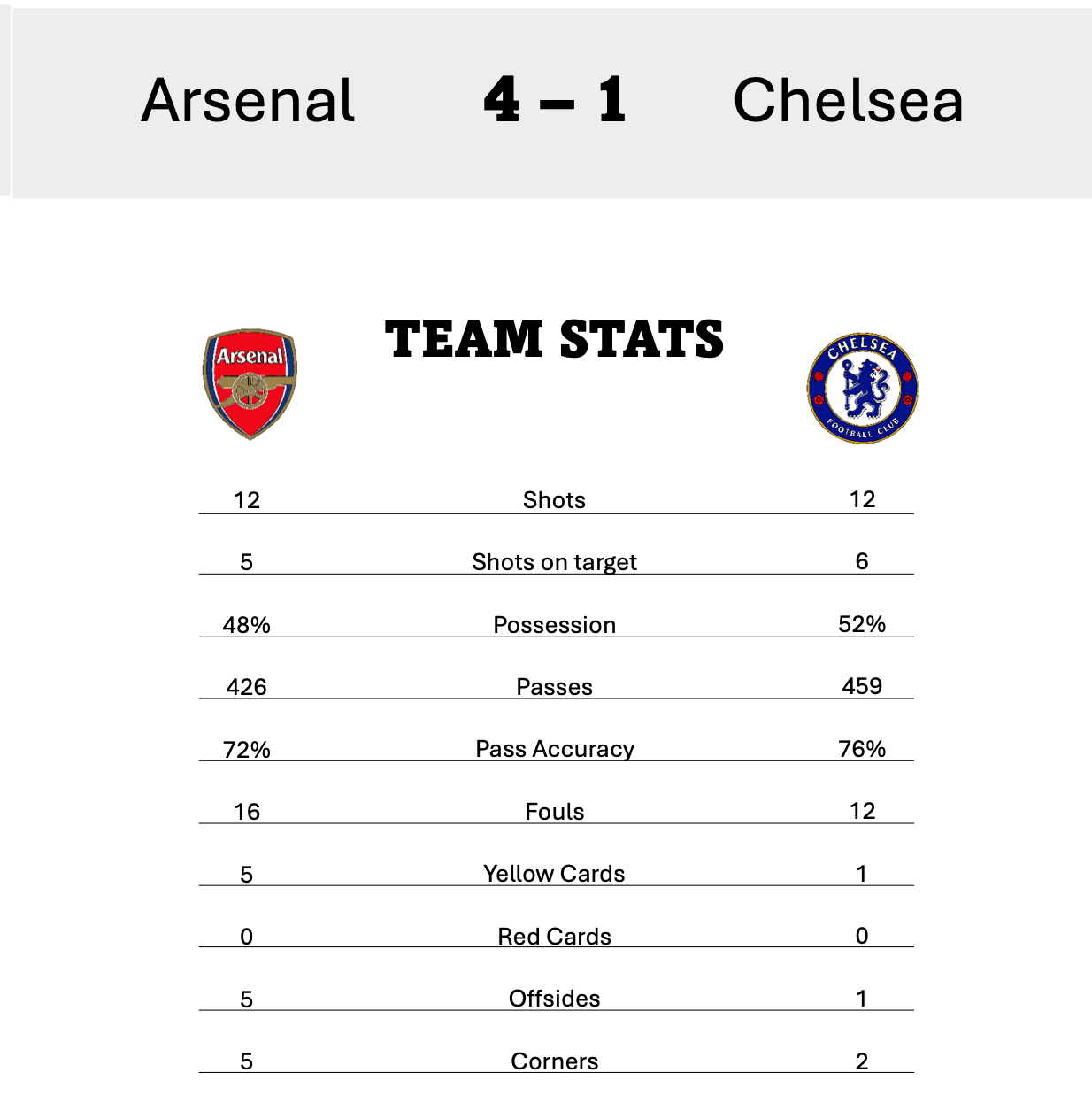
One of the most notable games of the season, and perhaps a main talking point then is how Arsenal beat Chelsea (one of their toughest opponents) so comfortably. Chelsea are likely to be challenging Arsenal for the title most years, so beating them 4-1 sets a message from the get-go. Why is it then that Arsenal can achieve this result, despite struggling against teams like West Ham who find themselves towards the bottom of the table.
The following section discusses this, with reference to formations played, both teams in and out of possession, before discussing what this tells us when comparing the two results.
Arsenal went with a 4-2-3-1 formation, the same formation they have used in the majority of games this season and one they will later go on to use against West Ham. In the previous report sent out I discussed how this formation typically operates, so refer back to this if necessary to recap. Chelsea also matched Arsenal and used the same 4-2-3-1 formation. Chelsea have used this formation in other games this season but are more adaptable and have used several other formations across a variety of different games.
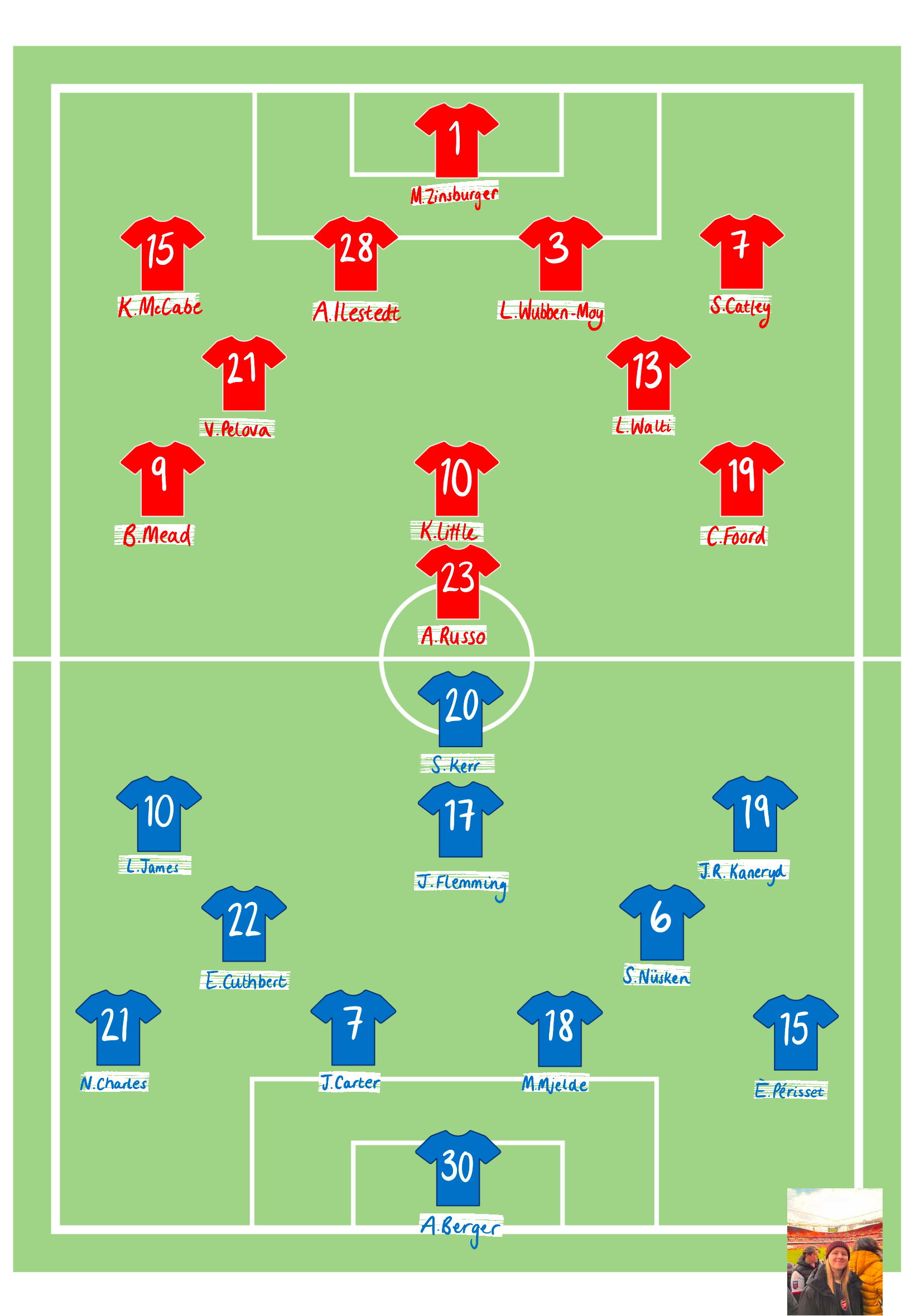
As mentioned previously, weaknesses of this formation appear when the opposition team plays two strikers as the two CBs are often left in 2v2 situations. If CDMs are out of position it leaves space to exploit in the middle and if attacking midfielders don’t come deep to receive the ball, the team can struggle to move the ball up the field effectively. Strengths of the system include having three midfielders overloading the middle and forcing teams wide when they have the ball, forcing more crosses that the CB’s should be able to deal with. Considering this, if teams can use the strengths of their formation and capitalise on the opponent’s weaknesses, whilst preparing to address their own, they should achieve success. It is clear both teams will aim to attack, even counter attack the other, as the formation often suggests.
Arsenal in possession
How Arsenal played in this game when they had the ball. This includes things that went well, areas of weakness and any goal/goals scored.
Arsenal started this game with an extremely high intensity – stringing passes together well, driving with the ball and drawing fouls. They even looked to get the game started again straight away after winning an early free kick. Lots of space opened up from the start for passes and Russo created even more space by dropping deep, where she could then help to move the ball out wide.

When building out from the back Ilestedt and Wubben-Moy split (to the left and right side of the pitch), with McCabe positioned slightly higher. With James playing more centrally, McCabe had time and space to receive the ball high and wide and could utilise her passing ability to try and play the ball for Russo in behind.
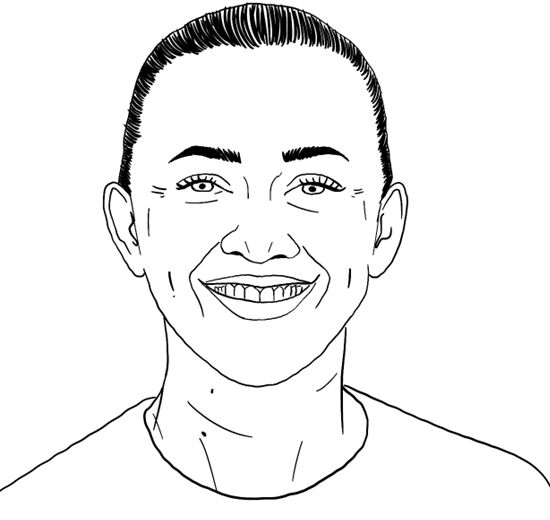
Arsenal looked to counter attack when Chelsea were high up the field attacking. Russo would drop deep and utilise her hold up play, laying it off to McCabe who can play it over the top to Mead in space out wide. Chelsea were often left with a back three and Mead could look to switch the ball to the other flank for Foord. Foord is then left in a 1v1 situation with Perisset, which she excels in. Foord and Mead would even swap flanks to try and improve their chances of succeeding in 1v1 situations.
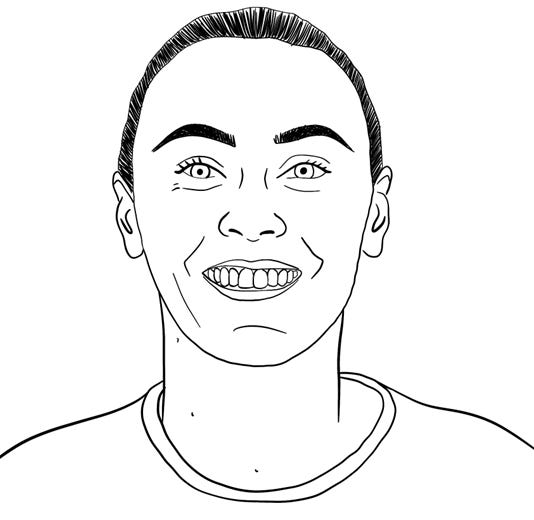

Even straight after kick off following a goal, Arsenal keep the momentum up. Walti moved out wide into space to help move the ball forward. She invited pressure before noticing the space in behind the back line for Russo. She played a perfect pass for Russo who chipped it past Berger to the right side of the goal. This was repeated following the third goal for Arsenal, keeping the momentum up. Little pressured Nusken to win the ball back, laying it to Russo who dragged Carter out of position and played it on the left flank for Catley to run onto. Foord made the run in the space in between the backline but she just timed her run wrong and was caught offside.
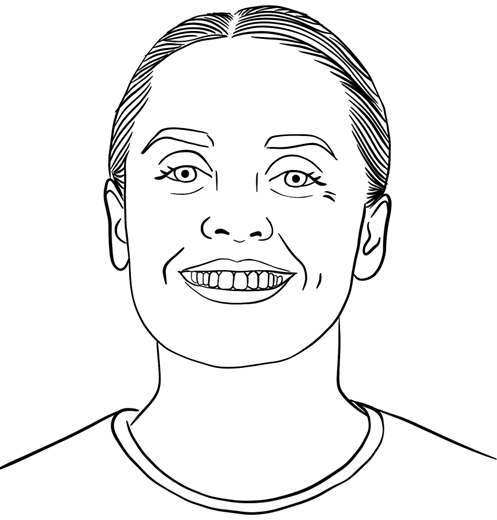

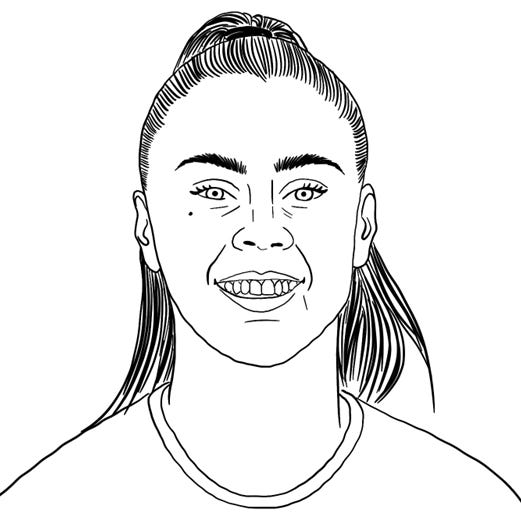
Arsenal out of possession
How Arsenal played in this game when they didn’t have the ball. This includes how they defended, things that went well, areas of weakness and the reasons for the goal/goals Arsenal conceded.
When Chelsea had the ball, Arsenal made sure they were covered defensively, moving back into a traditional back four, with Walti and Pelova coming deep just in front of the back line to provide defensive cover. Little, Mead and Foord also dropped centrally when defending to block passes through the midfield. Pelova and Walti made sure to move across, depending on the flank Chelsea tried to attack, if Chelsea chose to go wide to try and create attacking opportunities. Mead and Foord often helped out defending the flanks, winning the ball back and leading the counter for Arsenal if the opportunity presented itself.
Arsenal won headers all over the pitch, always fighting to be first to every ball, showing their determination from the offset. They took no chances in this game and cleared up defensively where necessary. Wubben-Moy would even move across to support Catley in dealing with any long balls. Catley, Wubben-Moy and Ilestedt identified when Chelsea were trying to play the ball in behind the CB’s and dealt with it well.
When Chelsea looked to create chances by crosses into the box, Arsenal crowded out the box with players coming in such as Mead, Pelova and Walti who would join the back four, with Little on the edge of the box to deal with loose balls.
Their press was designed to cover every single Chelsea player, working together as a team and this forced Chelsea to play long balls where Arsenal would win back possession. Every time a Chelsea player had the ball they would be crowded out, often doubling or tripling up to win the ball back or force Chelsea backwards.
Arsenal knew how effective Lauren James could be on the ball for Chelsea, so they doubled, sometimes even tripled up on defending her to try and pressure her to play the ball back or give away possession. Wubben-Moy was stepping out to intercept when the ball was played into the feet of James. Kanerryd also looked like one of the best players for Chelsea, often receiving the ball out wide or trying to make a run in behind. McCabe dealt with this extremely well, stepping out as soon as Kanerryd looked to receive the ball to win possession back for Arsenal. Catley also came across to clear balls aimed for Kanerryd when she was operating on that flank.
Little’s accurate positioning throughout the game meant she was always in the right place to pick up any loose or second balls. It was also this that triggered Arsenal to counter on a number of different occasions. McCabe also moved in field on a number of occasions to make sure she was first to loose balls, or even to pressure the opponent and win the ball back.
Zinsberger remained switched on throughout the entire game, even straight after Arsenal had scored, when teams are typically associated with being most vulnerable. She saved Fleming’s shot straight after the first goal was scored.
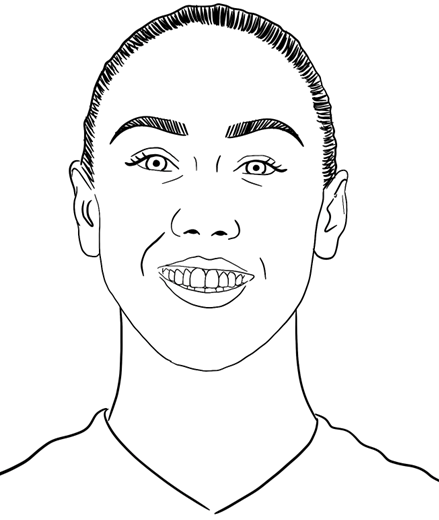
Arsenal continued to press collectively and intensively throughout the entire match, working together extremely well and rarely being caught out.
Chelsea in possession
How Chelsea played in this game when they had the ball. This includes things that went well, areas of weakness and any goal/goals scored.
Due to the Arsenal press Chelsea were often forced to play long balls over the top. Even if they were aimed for Kerr, she often failed to time her run and would be caught offside.
Chelsea’s success in possession came when they were able to play quick, accurate passes that would catch out the Arsenal press. For example, when Charles moved away from Mead out wide and drove with the ball down the flank, she invited pressure from McCabe to press. As long as she got the ball past McCabe they could start to free the press, and she did, playing it to Nusken out wide. Walti had to move to press Nusken as McCabe was now out of position, but as she failed to get there in time Nusken could play the ball into the space left by Walti in the midfield. This left the Arsenal back line stretched and the ball came out to Kanerryd. Catley did not get close enough to Kanerryd and even though Foord came back to help out, they didn’t close down the shot completely and it snuck into the bottom right.
Chelsea found some attacking threat with Perisset finding James operating on the right flank. She drove with the ball and Wubben-Moy and Walti came across to double up, but she did well to skip pass and cross the ball into the box. Arsenal cleared the ball when it got into the box. James also found some joy when Fleming moved more centrally as she would drag Wubben-Moy out of position and James could move with the ball into space. She got a shot away, but it went just wide.
Kanerryd had the most joy for Chelsea when she was on the ball, attempting to make runs in behind for Charles to find her or asking for the ball out wide.
Cuthbert had a crossing opportunity, but she failed to look up and the cross went straight into the hands of Zinsberger.
Even when Chelsea gained a bit of possession in the second half, they struggled to string passes together that would catch Arsenal out like they did for the Kanerryd goal.
Chelsea out of possession
How Chelsea played in this game when they didn’t have the ball. This includes how they defended, things that went well, areas of weakness and the reasons for the goal/goals they conceded.
Buchanan was often coming higher up on the pitch, to try and win the ball back or follow Russo or Pelova deep. This allowed space for a runner in behind the back line and resulted in Carter and Berger having to get back, with Berger giving away the penalty that Russo went on to score.
Substitutions
Chelsea looked to change things at half time, making three substitutions. Lawrence, Buchanan and Kirby came on for Perisset, Mjelde and Nusken at half time. Lawrence and Buchanan did well since they came on to prevent Arsenal getting in behind as often as they did in the first half. Kirby had an opportunity to shoot from the edge of the box, but it was fired over.
Maanum came on for Little in the 61st minute, which looked more like a precaution substitution rather than a tactical tweak. Maanum was operating higher up, sometimes even as a second striker alongside Blackstenius when gaps opened up in the Chelsea defence.
Reiten came on for Kanerryd in the 64th minute. Reiten had opportunities to cross from the left but Arsenal either cleared or it never made it into the box, hitting the side netting.
Fishel comes on for James in the 76th minute, with Chelsea looking to have more of an attacking presence in the box. Wubben-Moy did well to not let Fishel have any time on the ball. Fishel was presented with one opportunity for a shot from the edge of the box, but it went wide.
Blackstenius came on for Russo, Maritz on for Catley and Lacasse on for Mead in the 76th minute as well. Maritz did well after coming on to prevent Charles and Reiten linking up on the left flank. She did receive a yellow card for pushing Reiten on the edge of the box, but nothing came from the Chelsea free kick anyway. Blackstenius had a clear opportunity through on goal but fired over.
Cooney-Cross on for Pelova in the 93rd minute.
Conclusion
After considering the tactical set ups of both teams in both fixtures, looking at performance, strengths and weaknesses, it helps to understand why these two results occurred.
In comparing the key aspects of both games, we see that when Arsenal play against a team with a more attack-based formation, they are most likely to succeed and most likely to perform to a higher standard. Arsenal know the weaknesses of a 4-2-3-1 system well, as they play that system themselves, so to break down Chelsea they knew they had to get a number of different things right. They did this so effectively, and that allowed them to feel a sense of confidence throughout the 90 minutes that nearly everything they were doing was successful. There was a significant amount of space for Arsenal to play passes through the midfield, and this led to Arsenal having more time to make quick, accurate passes. Arsenal were able to play to their strengths against Chelsea, they could utilise their wingers in 1v1 situations as Chelsea were not doubling up and were leaving their fullbacks high up the pitch. Arsenal got back to defend as a team, and they also pressed as a team; they could pressure dangerous players that Chelsea had to give them hardly any time on the ball. The level of confidence the team played with collectively resulted in individual confidence and therefore individual high performances. Chelsea were left with no choice but to feel frustrated, forcing passes over the top, under pressure on the ball at all times, rarely being allowed time to play the attacking football that they wanted to play. Chelsea rarely play defensive football, as they have such great attacking assets. Arsenal knew they could test Chelsea defensively, catch them out on so many occasions, yet also be defensively covered when they needed to be. They knew if they got back to defend in numbers, they could easily counter attack quickly and outnumber Chelsea when they were caught out of position.
If we look to the West Ham game, we see a completely different set up from West Ham. They knew how to frustrate Arsenal, relying little on their attacking assets and more on their defensive stability. They looked to all the ways that Arsenal usually cause attacking threats and nullified that, by pressing every Arsenal player on the ball, frustrating them and forcing them into long, overhit passes. They knew if they could frustrate Arsenal they would play with little confidence and intensity. Playing with little confidence also means that even if Arsenal get an opportunity to break West Ham down, even once or twice, they often misplace passes or are hesitant to take shots. This benefits West Ham even more. It also means Arsenal are less likely to work as a team effectively, so when it comes to set pieces or counter attacks, West Ham are more likely to catch Arsenal out, as individual performances will also be less confident. As Arsenal failed to change their system at all and West Ham stuck to their system, it meant the same situation would occur for the full 90 minutes.
Going forward an important thing for Arsenal to consider is that most teams, especially those lower down in the table, might look to the successes that West Ham had and operate in the same way. Arsenal must learn to adapt their system to capitalise more on the weaknesses of the West Ham system, playing the ball out wide when there is space and learning to play with confidence and not get easily frustrated. They must find ways to address the weaknesses in their own system that other teams may look to exploit, perhaps working on defensive cover, pressing as a collective and being less hesitant in taking shooting opportunities when they are presented. When playing against attacking- minded teams, often associated with those teams higher in the table, Arsenal must look to repeat the successes achieved against Chelsea, whilst also being mindful of the weaknesses of their system that other teams may look to exploit.








